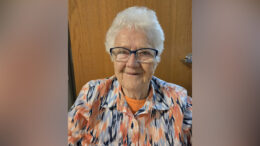PITTSBURGH (AP) — During his first day on the job in mid-December, Mike Sullivan looked around the Pittsburgh Penguins’ dressing room and saw a couple of MVPs, a handful of All-Stars and millionaires in abundance.
He also saw a group languishing in the bottom of the Eastern Conference. No life. No momentum. And — at the time, it seemed — little hope for a quick fix.
“I said, ‘I think we have great players,'” Sullivan said. “Our challenge is to make a great team.”
Five months later, the collection of seemingly mismatched parts Sullivan inherited has evolved into a juggernaut. The Penguins skate. They shoot. They defend. Then they skate and shoot and play defense some more. Sullivan calls it “playing the right way,” a system that when working properly can suffocate opponents the way Pittsburgh did in a 2-1 victory over Tampa Bay in Game 7 of the Eastern Conference finals on Thursday night.
“They were on top of us pretty good,” Lightning forward Brian Boyle said.
And they didn’t let up. The Penguins outshot the Lightning 39-17 while winning a Game 7 on home ice for the first time in 21 years, receiving a pair of goals from rookie Bryan Rust and sweeping bodies out of 22-year-old goaltender Matt Murray’s crease.
The team criticized for being too reliant on stars Sidney Crosby and Evgeni Malkin during six fruitless springs since that giddy June night in Detroit in 2009 in which the Penguins won the franchise’s third Cup is suddenly deep, resilient and surging as it prepares to face Western Conference champion San Jose in Game 1 of the Cup Final on Monday night.
“I know there’s a lot of stories that surround this group, but the greatest story of all is the group itself,” Sullivan said.
One that has spent the last six weeks evening scores in a sense. The Penguins took out the New York Rangers in five games to open the postseason, knocked out Presidents’ Trophy winners Washington in six and withstood the defending Eastern Conference champion Lightning by wearing Tampa Bay down.
“I think throughout the playoffs, we’ve played different styles, different teams and been able to adjust and get to our game,” Crosby said. “The biggest challenge is ahead of us.”
Maybe, but maybe not. The Penguins spent the better part of 18 months in a funk after losing to the Rangers in the Eastern Conference semifinals in 2014, a series in which they blew a 3-1 lead, a meltdown that cost general manager Ray Shero and popular coach Dan Bylsma their jobs. Jim Rutherford took over in the front office and hired professorial Mike Johnston, whose acumen as a tactician failed to generate much enthusiasm on his star-laden roster.
Mired near the bottom of the Metropolitan Division in December, Rutherford brought in Sullivan, who spent a decade as a grind-it-out center and an extended period as John Tortorella’s top lieutenant in New York and Vancouver. Sullivan cut through the noise and challenged his players to become accountable to each other. He played no favorites while going over video, calling out mistakes regardless of status.
The turning point may have come on New Year’s Eve in Detroit. The Penguins trailed 2-0 after the first period, any minimal steps of progress made with Sullivan on the bench suddenly gone.
“We were mad,” forward Patric Hornqvist said earlier this month.
And the Penguins went out and played like it. Displaying an urgency it often lacked under Johnston, Pittsburgh poured in five goals over the final 40 minutes to win going away. The Penguins reached .500 with a romp over the New York Islanders two days later and took off, fueled by Crosby’s resurgence and a series of moves designed to put an emphasis on speed. Rutherford acquired smooth skating Trevor Daley and tireless Carl Hagelin in trades and called up forwards Conor Sheary, Tom Kuhnhackl and Rust permanently.
“I think the young kids are bringing the energy and the enthusiasm,” Sullivan said. “The older guys have been great mentors for these kids.”
It helps that the kids can play. Rust was so pumped before Game 7 he scrapped his pregame nap because he couldn’t keep his eyes closed, instead staring at the ceiling and imagining the possibilities. Yet even he didn’t imagine this, scoring twice — and nearly completing a hat trick — while skating alongside Malkin and Chris Kunitz.
Heady territory for a guy who began the year simply hoping he’d survive the final cuts of training camp.
“I was hoping to make an impact here and I guess this is how it happened,” Rust said with a laugh.
Ditto Murray, who began the season in the AHL and found himself elevated to No. 1 when Marc-Andre Fleury sustained a concussion on March 31. The 22-year-old has been in net for 11 of Pittsburgh’s 12 playoff wins and didn’t pout when Sullivan briefly went back to Fleury in Game 5 against the Lightning in part because Sullivan made it explicitly clear it wasn’t a benching so much as a chance to get a look at Fleury after a lengthy absence.
When Fleury struggled late in a 3-2 loss, Sullivan went back to Murray, who responded by helping Pittsburgh to the league’s biggest stage.
Sullivan’s transparency kept Murray engaged. Now Pittsburgh will spend the weekend preparing for the franchise’s fifth — and by far most unlikely — Cup appearance.
“We’re not finished yet,” Sullivan said. “We’ve got to re-energize and get ready for the next round. That’s the most important one of all.”





































